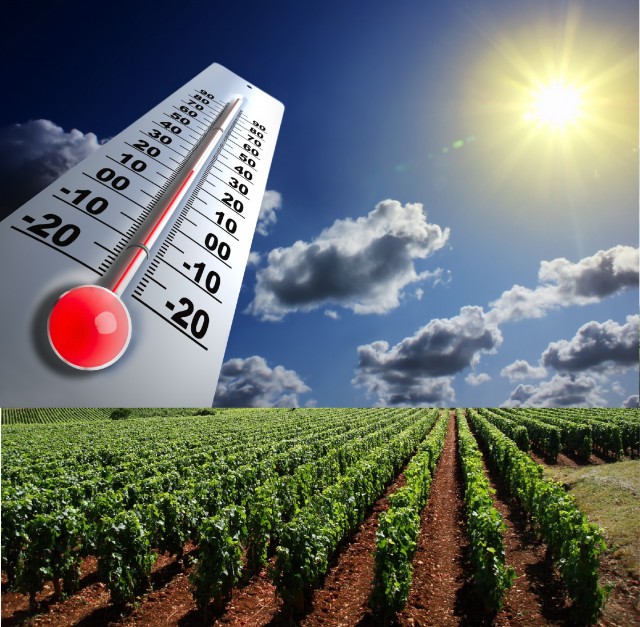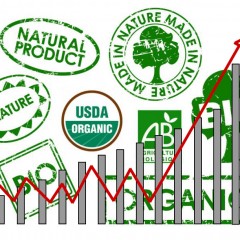
Before-time harvests, High alcohol contents… The effects of the climatic change are now being felt.
In order to better understand the consequences of the climatic changes on the vines, a study has been carried out by agronomists, simulating an increase of temperature in the Aude region. The increase in the levels of CO2 in the atmosphere, associated with the increase in temperature, stimulates photosynthesis thereby accelerating the vine’s development, speeding up the maturation period, hence upsetting the harvesting calendar, in other words, earlier harvests. Harvests are taking place in the middle of August instead of mid September, as it should. This was the case for the champagne area in 2011. The winegrowers situated in the south of France are tending to harvest at mid August and even at the beginning of August, in other words, a month ahead of the harvest period twenty years ago!
This increase in temperature results in an increase in the sugar levels and therefore the alcohol content (it’s the fermentation). The wines have seen their alcohol contents rise by 2,5º in the last twenty years, passing from 12-13º to 14-15º. This does not please consumers particularly, since an excess of alcohol has a tendency to mask the aromas and polyphenols, which are intrinsically related to the quality of a wine.
The French wine industry has remained relatively silent on the subject, and is searching for solutions to the problem. When a vine lot is to be renewed, the producer will be encouraged to choose a plot of land less exposed to the sun, or slightly more elevated in order to reduce the heat. Cutting the leaves is becoming less and less beneficial; this is now helping to keep the grapes in the shade and hence reducing the sugar levels.
Recently a solution has been put in place by the European Union: It’s a “de-alcoholisation” process of wine. This technique allows for a reduction of 2 to 3º in red, white and rose wines.
In spite of all the efforts and strategies these will not suffice. The solution will be the migration of the vine varieties, and the appearance of new areas of production, such as the south of England.
As far as France is concerned, certain vine varieties are being tested, and we should see towards the end of the century, Tempranillo from Spain, Sangiovese from Italy or even the Touriga nacional from Portugal, in our Mediterranean regions. These vine varieties, being more resistant to the climatic change.





